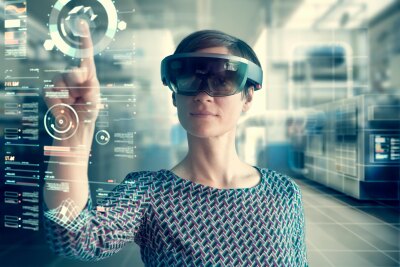
XR in Teaching & Learning Topics
Extended Reality (XR)
XR (or Extended Reality) is an emerging set of technological innovations with the potential to merge physical and digital learning spaces. While many tech companies are currently developing unique hardware and software solutions, the current space still contains significant uncertainty. With the goal of demystifying this field, here are some explanations and examples of XR technologies and their uses in the classroom.
What is XR?
XR is a catch-all term for VR, AR, and MR technologies, and is shorthand for Extended Reality. Some common terms surrounding XR include:
- XR (Extended Reality) – Typically used to refer to Virtual Reality, Augmented Reality, or Mixed Reality. XR is a catch-all term that means the object of discussion is in the general realm of Extended Reality technologies.
- VR (Virtual Reality) – Typically refers to any experience or software that makes use of a head-mounted display (HMD). VR applications do not interface with the real world; they exist within an entirely virtual space.
- AR (Augmented Reality) – With the use of cameras, AR applications will digitally place assets into the real world. For instance, using goggles with special lenses may allow a student to view digitally placed lab equipment on an empty table.
- MR (Mixed Reality) – Similar to AR with one key difference; Mixed Reality changes the way a user interacts with physical objects by giving them additional digital properties. For example, using goggles and a Mixed Reality application a student may view an X-Ray of a device they’re physically rotating in their hands.
- HMD (Head-Mounted Display) – A device with a screen and lenses, worn over the eyes. Required for VR applications, with the built-in screens display the virtual world. Typically used interchangeably with “Headset” and “Goggles” depending on the shape of the HMD. When using the term “Goggles” one typically refers to an HMD that allows for AR and MR applications.
The Current State of XR
XR has a wide array of applications across many use cases, though they may not all be appropriate to your learning environment. Current XR tools add value to an education plan in very specific ways. Common use cases for XR include:
- Virtual Labs – With a recent boom in online learning, instructors increasingly value interactive and experiential digital learning opportunities for students.
- 3D Visualization – Instructors may use XR technologies to assist students in visualizing concepts that may be otherwise difficult to understand.
- Innovative Teaching and Learning Projects – Many universities are incorporating XR into research and plans of study. Using this new medium may allow instructors and students alike to foster a more creatively enriching classroom environment. (Check out the “Additional Resources” for specific case studies from universities and their research)
Module Navigation
- Next Module: XR in the Classroom
- Previous Module: No Previous Modules in this Section
- Current Topic: XR in Teaching & Learning
- Next Topic:
Leave Your Feedback
You must be logged in to post a comment.